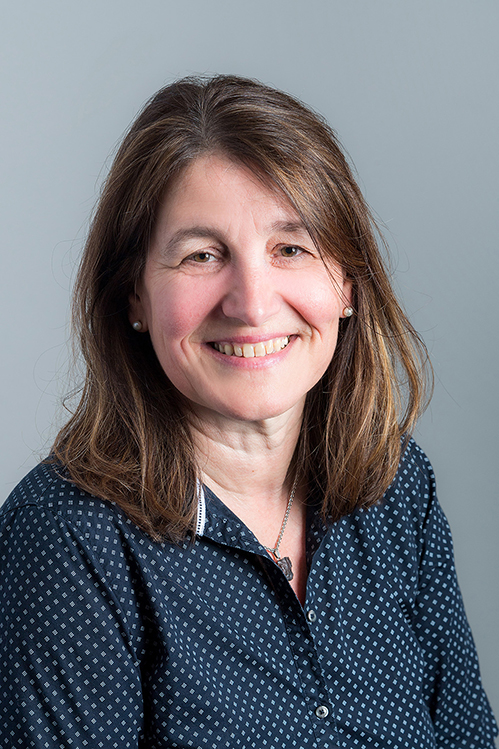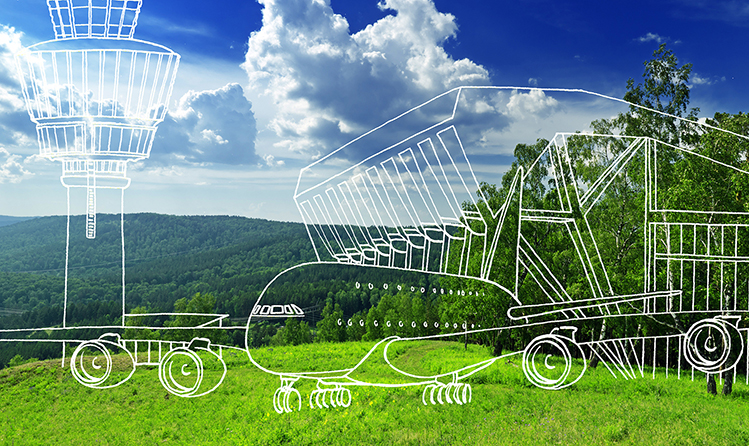Ionisation is a method whereupon the indoor air gets cleaned in a natural and sustainable way. ionair artificially emulates this natural cleaning process with its Air Quality System (AQS). This is facilitated for the general well-being of the airport’s visitors. By Monika Huebscher, Chief of Marketing + Communication, ionair ag.

Monika Huebscher, Chief of Marketing + Communication, ionair ag.
For the passengers, the airport is the gateway to the world. It represents the start of a trip that can take them near and far. However, the airport is also a place that is visited by many other people who do not step into an aircraft. At Zurich Airport alone, almost 90,000 passengers were handled per day in 2017. This is high frequency and with ‘The Circle’, an infrastructure project encompassing an area of 180,000sqm, due to be inaugurated there some time in 2020, not only will the range of shopping centres and restaurants further expand, but the number of visitors will also continue to rise. Nowadays, modern airports are also known as Airport Cities. The expression stands for the change of the perception – from operators and users alike. “These days, airports are constructions that provide an unbelievably wide range of services, which go far beyond just flying,” explains Beda Weibel, CEO of ionair ag, a leading Swiss company that specialises in the development, marketing and service of innovative and energy-saving systems of odour neutralisation and germ reduction in air.
Major nuisance
Even today, the indoor air quality (IAQ), indoor air hygiene and the costs associated with them pose a great challenge to the airport operators. The ventilation of the properties, especially for an airport, is more than demanding, since the outdoor air is loaded with kerosene and other harmful substances that vary with time. These harmful substances, which can be present even in minute quantities, should not enter inside the building. Thanks to its ionisation method, ionair provides a remedy and removes kerosene and other harmful substances very efficiently. In addition, even harmful substances generated by other sources have to be minimised. Smoking lounges, toilets, restaurants and the passengers themselves constantly generate large levels of impurities in the indoor air.
A sophisticated system
The method for air treatment works with ionisation tubes that ionise the air via electric discharge. “The ionisation generators are installed either in a mono-block or in the supply air duct, where they are used after the usual air treatment such as filtering, cooling, heating, humidification or dehumidification,” explains Weibel. A processor with a five-time sensor adaptation then ensures an optimal mode of action indoors. According to Weibel, this means that there is a constant balance available between oxidizable gases and oxygen ions in the ionised areas.
Fresh mountain air
Beda Weibel compares ionisation with the sensation of spending time in the mountains. We know that the air in the mountains has a favourable impact on human health from our own experience and also from innumerable studies. “This is why we enjoy the moments of peace in the mountains,” emphasises Weibel. However, day-to-day life is entirely different: we spend more than 80% of our time indoors. Hence, the quality of indoor air is a critical factor for our health, our well-being and our performance. The well-being of an indoor environment is determined by various factors. Apart from the acoustics, the light quality and the thermal comfort, constituents such as particles, micro-organisms or liquid gases may impair the quality. “Everything depends on the quantity of the constituents and on the air handling systems, which have to be designed, constructed and maintained in such a way that any nuisance caused by harmful substances is prevented,” explains Weibel.

Ionisation is a method whereupon the indoor air gets cleaned in a natural and sustainable way. ionair artificially emulates this natural cleaning process with its Air Quality System (AQS). This is facilitated for the general well-being of the airport’s visitors.
CO2 footprint as a key performance indicator
Flying is associated with a high level of energy consumption, and this means the emission of CO2 into the atmosphere. And we are all only too familiar with the fact that we emit too much CO2. ACI EUROPE is actively grappling with this subject jointly with the Airport Carbon Accreditation (ACA) programme. According to ACA, 100 airports should be CO2 neutral by 2030. Providing a proper indoor climate in the airport is also associated with a high level of energy consumption. With the optimisation of the ventilation concept, the ionisation technology can help in terms of saving large quantities of electrical and thermal energy without affecting comfort in any way. “At the Hamad International Airport (HIA) in Doha, Qatar, energy savings of 25% were realised during the course of a joint study over a three-year period,” explains Beda Weibel. Many other airports around the globe confirm these results and deploy air ionisation today by default for new constructions or as retrofitted equipment. The ionair team is extremely proud of and highly motivated about making a positive contribution towards achieving the ACA targets and thus, even achieving the international climate goals.







